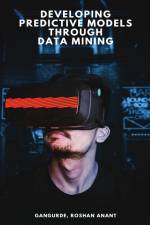von Gangurde Roshan Anant
31,00 €
Developing predictive models through data mining is a multifaceted process that involves extracting valuable insights and patterns from vast datasets to make informed predictions about future trends or outcomes. At its core, data mining encompasses various techniques and methodologies aimed at uncovering hidden patterns and relationships within data. The journey begins with data collection, where a diverse range of information is amassed from various sources. This raw data then undergoes preprocessing, involving cleaning, integration, normalization, and feature selection, to ensure its suitability for analysis. The selected features may include numerical, textual, or categorical data, each requiring specific transformations. Machine learning algorithms are then employed to build predictive models based on historical data patterns, allowing the model to learn and generalize from past experiences. Supervised learning approaches, such as regression and classification, are common for predictive modeling, while unsupervised learning techniques, like clustering, can reveal hidden structures within the data. The model's performance is assessed through rigorous evaluation metrics, and iterative refinement may be performed to enhance accuracy. Cross-validation techniques are often employed to assess the model's robustness and generalizability. Additionally, ensembling methods, combining multiple models, can further improve predictive accuracy. Interpretability is crucial, and efforts are made to comprehend and explain the model's decision-making processes, especially in fields where transparency is essential. The development of predictive models through data mining finds applications across diverse domains, including finance, healthcare, marketing, and more. Ultimately, this process empowers decision-makers with valuable insights, enabling them to anticipate future trends, mitigate risks, and make informed decisions based on the patterns extracted from the wealth of available data.

